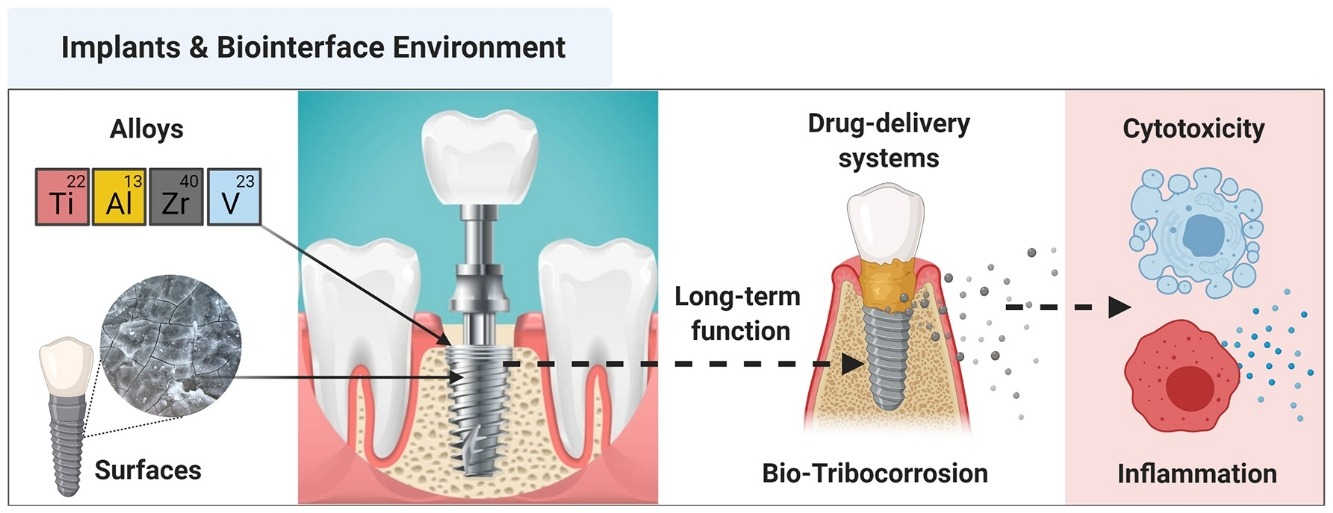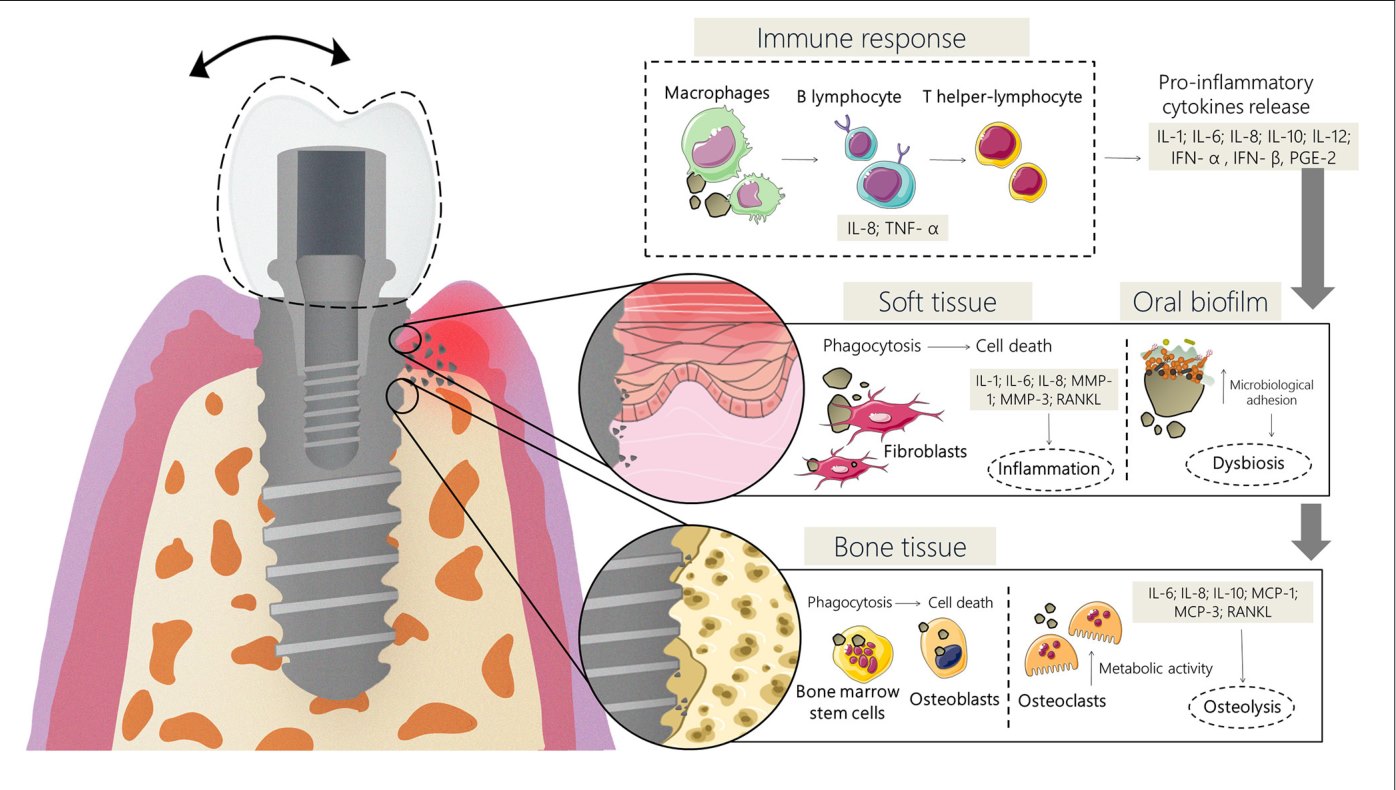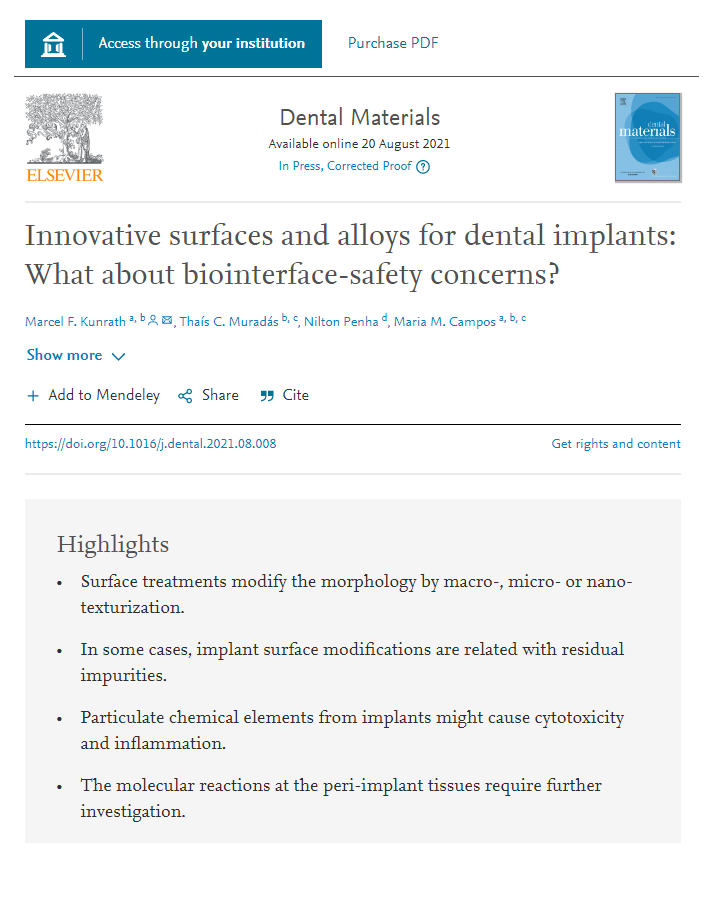Innovative surfaces and alloys for dental implants: What about biointerface-safety concerns?
Link: https://www.sciencedirect.com/science/article/abs/pii/S010956412100230X
Dental Materials
Available online 20 August 2021
Authors:Marcel F.Kunrath Thaís C.Muradás NiltonPenhaMaria M.Campos
https://doi.org/10.1016/j.dental.2021.08.008
Abstract
Objectives
The present review article aimed to discuss the recent technologies employed for the development of dental implants, mainly regarding innovative surface treatments and alternative alloys, emphasizing the bio-tribocorrosion processes.
Methods
An electronic search applying specific MeSH terms was carried out in PubMed and Google Scholar databases to collect data until August 2021, considering basic, pre-clinical, clinical and review studies. The relevant articles (n = 111), focused on innovative surface treatments for dental implants and their potential undesirable biological effects, were selected and explored.
Results
Novel texturization methodologies for dental implants clearly provided superficial and structural atomic alterations in micro- and nanoscale, promoting different mechanical-chemical interactions when applied in the clinical set. Some particulate metals released from implant surfaces, their degradation products and/or contaminants exhibited local and systemic reactions after implant installation and osseointegration, contributing to unexpected treatment drawbacks and adverse effects. Therefore, there is an urgent need for development of pre-clinical and clinical platforms for screening dental implant devices, to predict the biointerface reactions as early as possible during the development phases.
Significance
Modern surface treatments and innovative alloys developed for dental implants are not completely understood regarding their integrity during long-term clinical function, especially when considering the bio-tribocorrosion process. From this review, it is possible to assume that degradation and contamination of dental surfaces might be associated within peri-implant inflammation and cumulative long-lasting systemic toxicity. The in-depth comprehension of the biointerface modifications on these novel surface treatments might preclude unnecessary expenses and postoperative complications involving osseointegration failures.




